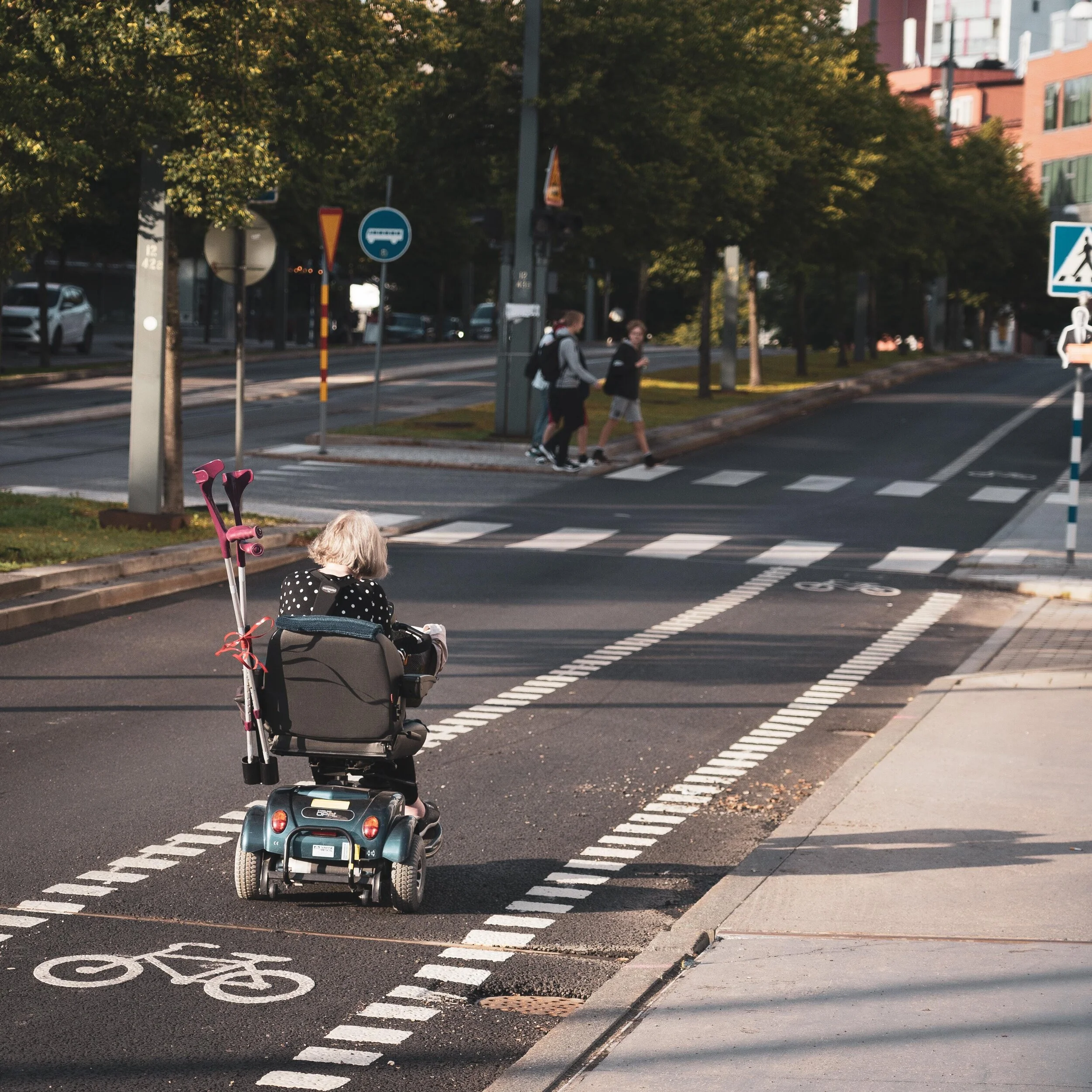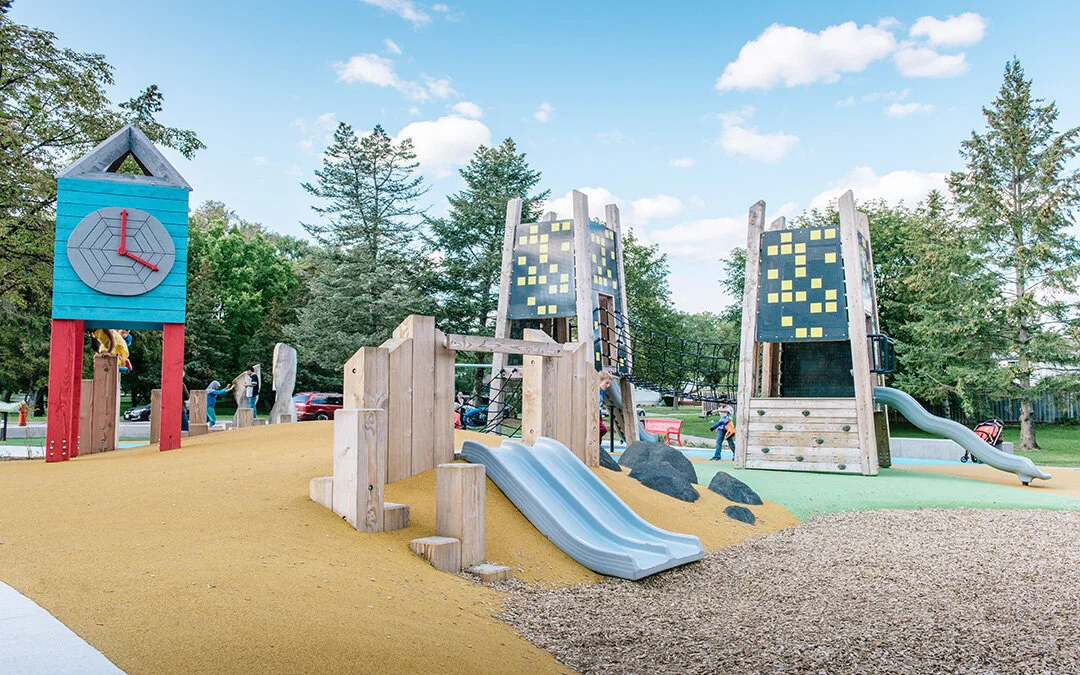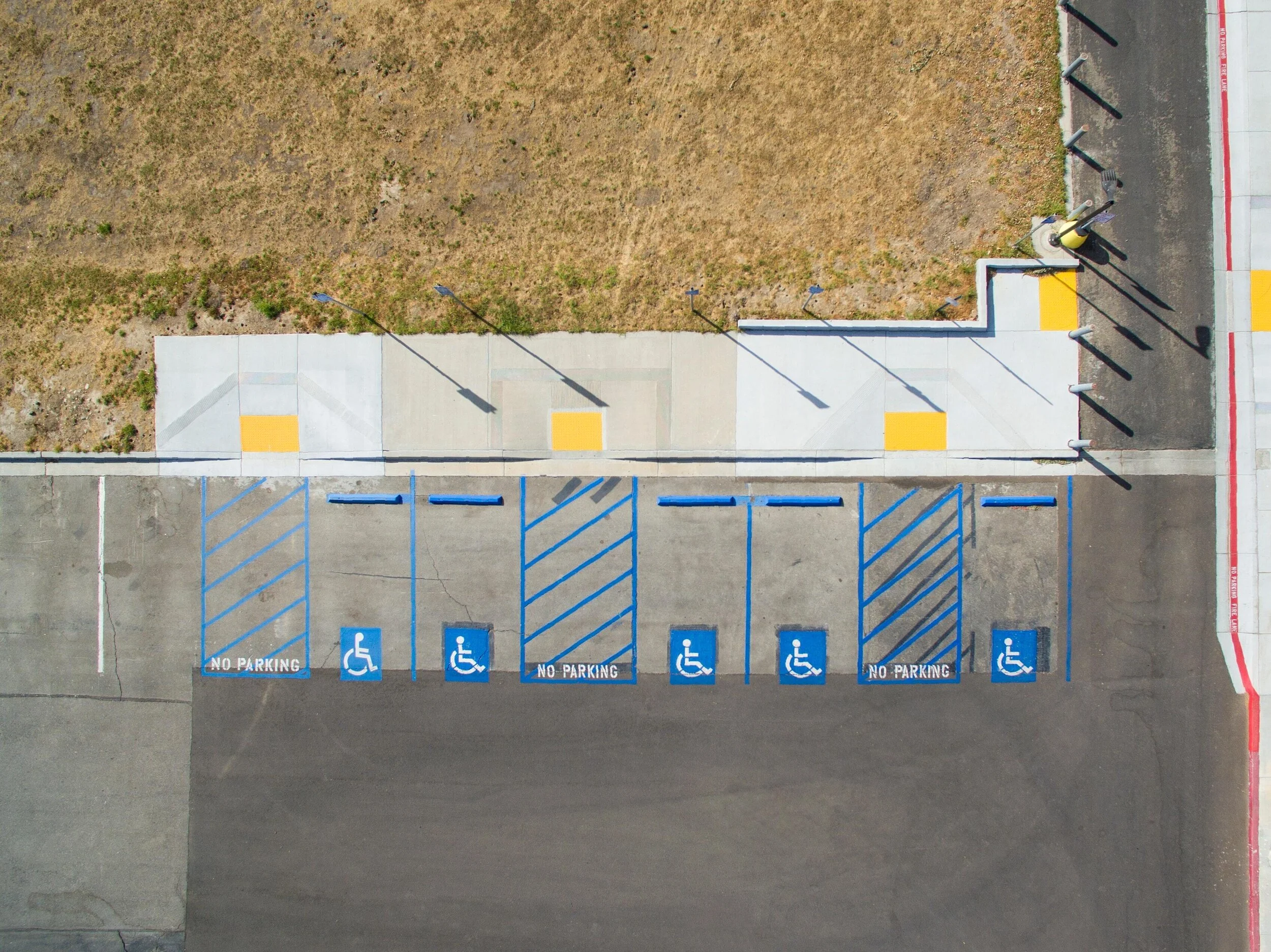Snapshot: Disability and Accessibility in Public Space
PHOTO: Rasmus Gerdin
Even as the growing discussion about the widening of sidewalks and curbside pick-up services become the norm during the COVID-19 period, the inaccessibility of public spaces remains a critical issue. For example, disability advocates have identified accessibility barriers with the City of Toronto’s CaféTO and CurbTO programs, highlighting that additional obstacles such as patio furniture or signage can be dangerous if not properly planned for. Although this is only one example, it highlights how people with disabilities, which broadly describes the diverse range of persons with physical, cognitive, sensory, mental health and/or learning impairments, are often excluded from how we think about safety in public space. As Talli Osborne shares in her recent feature piece, “Inaccessible spaces mean more than a physical barrier; they are also a safety threat.” The social model of disability and the concept of disability justice helps us to understand that society creates intersecting physical, social, and attitudinal barriers that function together to disable people with impairment. With this in mind, any effort to build safer public spaces and cities must also acknowledge the complexity and nuance of these dimensions.
What then does it mean to build safer public spaces for people with disabilities? In part, provincial legislation such as the Accessibility for Ontarians with Disabilities Act (AODA), which mandates accessibility standards for public, private and non-profit organizations has a critical role to play. Yet, as the stated goal of making the Province of Ontario completely accessible by 2025 quickly approaches, disability advocates highlight that there is still a long way to go as demonstrated by the outstanding accessibility issues with Toronto’s public transit services. The application of universal design approaches can also be used to better support people with disabilities in public spaces. The principles of universal design are centered around the understanding that everyone experiences spaces differently and provides a framework for making the built environment and composition of public spaces accessible to the widest range of users.
With this in mind, in this week’s Snapshot we explore how people are working towards making public spaces and services more accessible.
Open Spaces and Streets:
Drawing from the key principles of the DeafSpace Project, Landscape Architect Alexa Vaugh developed the concept of DeafScape, which works towards building safer public spaces for people who are deaf or hard of hearing. The concept suggests and demonstrates design guidelines, such as enhanced lighting, seating and visual cues that can better support how persons who are deaf or hard to hearing navigate through city streets.
The use of supportive technologies such as accessibility apps also have a role to play in supporting how people with disabilities access and navigate through public space. Apps such as AccessNow, BlindSquare and AXS Map which largely use crowdsourced data, allow users to identify and document the accessibility features of public spaces and often offer a multi-lingual option, serving a wide range of users.
PHOTO: Earthscape
Public Parks and Green Space:
Universal design approaches can also enhance children’s experiences in public space. Public parks such as Jaycee Park in Mississauga and Unwin Park in Surrey, British Columbia demonstrate how prioritizing accessibility is beneficial to the development of all children.
Thinking beyond design of public space, community groups also work towards reducing barriers by providing accessible programing. For example, Disabled Hikers is a community project based in the Pacific Northwest focuses on building outdoor experiences and resources for people with disabilities. In addition to providing trail guides and virtual outdoor tours, the group also organizes group hikes led by disabled hikers. The Safari Walking Group based in Toronto is another example of community organizing for accessible programming. The group offers weekly exploratory walks in Toronto’s green spaces for persons who are blind or visually impaired.
Public Transportation:
Public transportation plays a vital role in connecting people to places, however people with disabilities often experience various obstacles accessing public transit services. Although there is much more work to be done, cities and public transit service providers have presented some interesting approaches. For example, Metro Vancouver’s transportation system Translink launched the Universal Fare Gate Access Program, which provides users who have a physical impairment with a radio-frequency identification (RFID) card that automatically opens gates and doors for users. The program is the first of its kind.
New York City’s notoriously inaccessible public transit system, the Metropolitan Transportation Authority (MTA) also recently launched Accessible Station Lab. Based in one station in downtown Brooklyn, this lab is fitted with numerous accessibility features including tactile paving strips and signage, high contrast maps and mobile apps that connects users to audio navigation tools.
PHOTO: Robert Ruggiero
While retrofitting public spaces for accessibility is a move in the right direction, it’s clear that more needs to be done to ensure that we are planning and designing inclusively – providing safe access for all.


